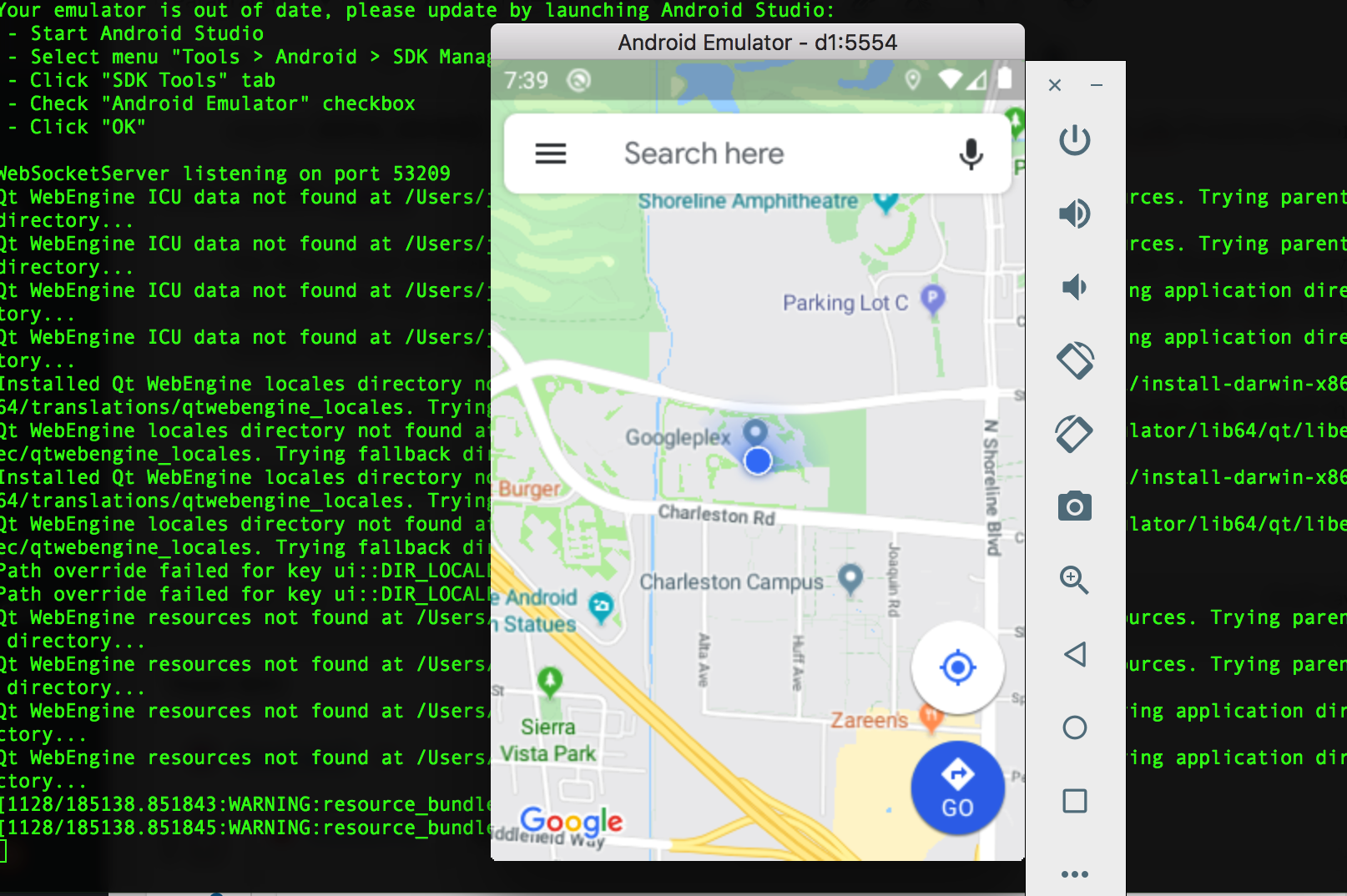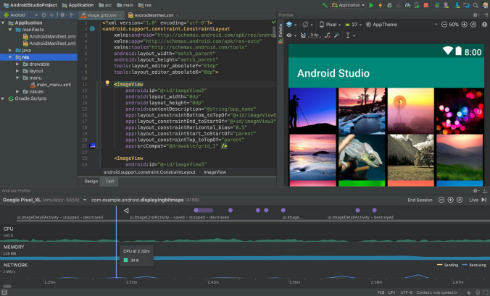
Android Emulator For Pc
Did you ever think of running your Android apps on your PC? Did you ever want to play a game that you loved on your computer and enjoy a larger user experience with a smooth gameplay and great features? Well, we are here to solve your problem once and for all.
Andy OS is known to be the fastest and speedy Android emulators for PC. It is also supported on laptops and tablets. It is a full-featured mobile operating system that runs on Windows or Mac only. This breaks the barrier of the mobile and PC for many.
SALIENT FEATURES OF ANDY OS ON PC
Android emulator, android for pc, Andy, Android Apps for PC, Android Games for PC. Play all your favorite android games. Directly from your PC or MAC Just launch andy from your desktop Run all your communication apps. From your desktop. (snapchat, Viber, whatsapp etc) Use your phone as a remote control. When playing games. 4# Andyroid Emulator. It is the trending Mac Android emulator which liked by the most. With open GL hardware support, this emulator is the one that is too easy to install. With the help of Andyroid Emulator, the phone can be turned into a remote control for gaming. With quick customer support, you will never find yourself deserted.
- It has a built-in VM Player. This enables it to be super-fast and this works without a graphics card even.
- It supports keyboard mouse-mapping for playing games. ES explorer is also available, now you can share your files from Android Emulator to PC via ES Explorer.
DOWNLOAD AND INSTALL ANDY OS ON PC (WINDOWS-MAC)
The installation guide for the Andy OS is super easy and you can run it even on a slow internet connection. Just a few clicks and all your apps will be available on your PC. Run games or open news or take notes or just message. Now everything available at your desk. You know the best part? IT IS FREE!
- First of all, we need to download the 1..5 MB Andy OS Web Installer from the link given below.
- Once this is downloaded, double-click the installer file and click on Next.
- It will automatically start downloading the required files. Relax and wait for it to get downloaded. The server speed is really fast, hopefully, it will not take much time to download. I
- It will install the Vmare libraries automatically. An installation successful message will be shown.
- After the successful installation, Andy OS will automatically start running. It will show you a trial version first.
This is it, Hurray! Now you can play your best games and run amazing apps on your PC without the worry of losing the charge of your phone.
HOW TO DOWNLOAD APK FILE ON ANDY OS

There are many apps that you can not find in the app store. This definitely means that you need the APK file and download that.There is also one more perk of installing Andy OS on PC. Now the Andy OS becomes the handler of the APK files on your computer. this enables you to download AndyOS directly on your computer and run it through the AndyOS. Double-click on the APK file and the AndyOS will automatically start downloading the file on your computer. This will give you the best user experience that you need to run Android app on your PC. Nothing was ever this easy before and without any harmful effects or virus.

We have shown you the way through which you can download and run Android Apps really easily on your PC. Hope you like the post related to downloading and installation of Andy OS on PC. If you have any queries kindly comment below or message. Thanks!
Mobile applications became an essential part of our lives, somehow we are dependent of them. We are using a lot of mobile applications every day. If you are lost in a new city, Google Maps gets you out of this situation. or if we want to make an appointment to the hairstylist, mobile applications assist us in our daily tasks.
It comes natural to us to use applications for everything that we need so it’s good to know that some applications might have security issues, and even know how to test their security.
Therefore, what if you want to learn how to do a mobile penetration test? Where would you begin? I recommend you to start from this article.
I will get you through the two big steps in order to install and root an Android emulator on your computer, which is the basis of an Android pentest.
Ok, enough talking, let’s jump to the interesting part. 💪

What would you need?
A rooted Android phone. What if you don’t have an Android Phone?! You should not worry about that, you can use an emulator of an Android device – which can be installed on your personal computer. An emulator is hardware or software that allows your computer (called the host) to behave like another system (called the guest). Emulation refers to the ability of a computer program in an electronic device to emulate another device. The emulator setup was tested using Ubuntu 18.10 – as the host and Android 7.1.1 – as the guest.
What steps should you follow in order to have your Android emulator?
1.Download the Android system image. You can do that by using Android-Studio.
Download and install Android Studio from here:
https://developer.android.com/studio/install
- Open Android-Studio , and select the AVD manager from the Tools tab.
- In the newly tab that have been open hit the “ Create Virtual Device ” button.
- Chose a device definition, (I have chosen Nexus 5X), and hit the “Next” button.
- Under the “x86 tab” , Select Android 7.1.1 ( Google APIs ) and hit “Download” button.
- After the download is finished, you can press the “ Next ” button.
- In the new tab opened, you can choose a name for your virtual device under the AVD Name field, all the other settings can be left as default. After that, you can hit the “ Finish” button.
- You might want to close Android Studio now, as the system image was already created.
2. Let’s turn on and root the emulator
- Open the Ubuntu terminal and type the following command:
$SDK_PATH/emulator/emulator -avd Your-emulator-name -writable-system -selinux disabled -qemu -enable-kvm
- The bold values should be changed according to your system. By default, after the installation of Android-Studio, the SDK_PATH is located in your home folder.
On my system, the following command is working:
$~/Android/Sdk/emulator/emulator -avd My-first-emulator -writable-system -selinux disabled -qemu -enable-kvm
- After the booting process is completed, on your desktop should be as in figure 3.
- Now, you have to open a new tab in the Ubuntu terminal and install adb.You can do that by typing the following command: $ apt install adb
Adb – Android Debug Bridge (adb) is a versatile command-line tool that lets you communicate with a device. The adb command facilitates a variety of device actions, such as installing and debugging apps, and it provides access to a Unix shell that you can use to run a variety of commands on a device. [2]
- After the installation of adb is completed, you can type the following command :
$ adb root && adb remount
The previous command will Restart adbd as root and remount system as writable. Make sure you restart the adbd while the emulator is running. - The next step is to install the Superuser.apk application to our emulator.
SuperSU allows for advanced management of Superuser access rights for all the apps on your device that need root. SuperSU has been built from the ground up to counter a number of problems with other Superuser access management tools[3]. In order to do that you have to type the following commands in the Ubuntu terminal:
$ git clone https://github.com/0xFireball/root_avd
$ cd root_avd/
$ adb install SuperSU/common/Superuser.apk
- At this stage, you should have the application SuperSU installed to the emulator. Next, you have to type the following commands in Ubuntu terminal:
$ adb push SuperSU/$ARCH/su /system/xbin/su
Instead of the bolded text $ARCH, you should type the architecture of your downloaded system image. In my case, the architecture is x86, so the following command will work for me, and should work for you too – if you downloaded the same system image as I did – $ adb push SuperSU/x86/su /system/xbin/su
In order to finish the rooting process you have to enter some more commands in terminal.
$ adb shell chmod 0755 /system/xbin/su – This command will update permissions of the file that have been pushed in the previous step.
$ adb shell setenforce0 This command will Set SELinux to Permissive mode.
$ adb shell su –– install This command will Install SuperSU’s su to system.
$ adb shell su –– daemon& This command will Run SuperSU’s su as daemon.
Finally, you can now open the superSU application on the emulator. The application will display the following message: The SU binary needs to be updated. Continue? Hit “ Continue” and use normal installation.
An error message is possible to de displayed : Installation failed ! Please reboot and try again. Don’t worry about it, hit the “OK” button and you will have a rooted Android emulator.
At this stage, your emulator should be rooted, but I recommend you to type the following commands in your terminal, otherwise, Superuser may not always persist after reboot:
$ adb shell – This command will open a root shell from your emulator.
$ su –daemon& – This command will Run SuperSU’s su as daemon.
That’s it.
Your emulator should be rooted now, even if you reboot it. Next time you want to open your emulator, just type the command:
$~/Android/Sdk/emulator/emulator -avd My-first-emulator -writable-system -selinux disabled -qemu -enable-kvm
If you got here, well done!
You have just installed and rooted an Android emulator, on your personal computer. This is the first step in order to do mobile penetration testing, without having a physical Android device.
Install Android Emulator Mac M1
Write to us, in the comment section below, if the process went well for you or you have encounter any sort of problems. ✍️👇